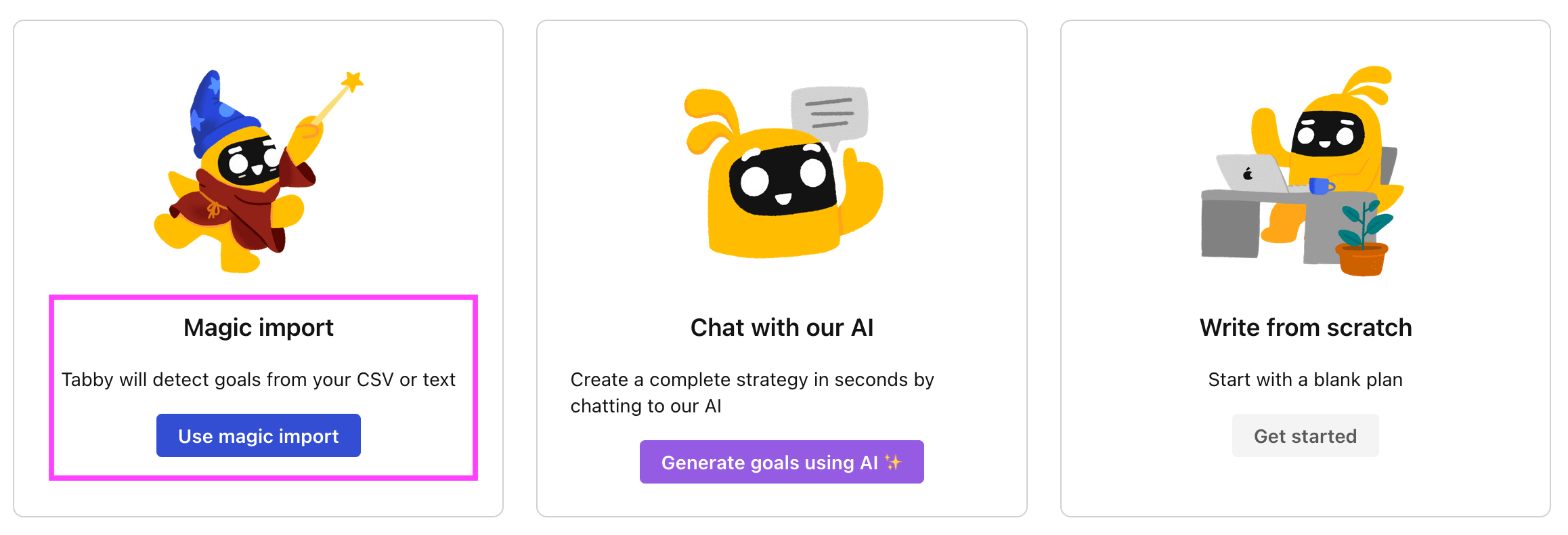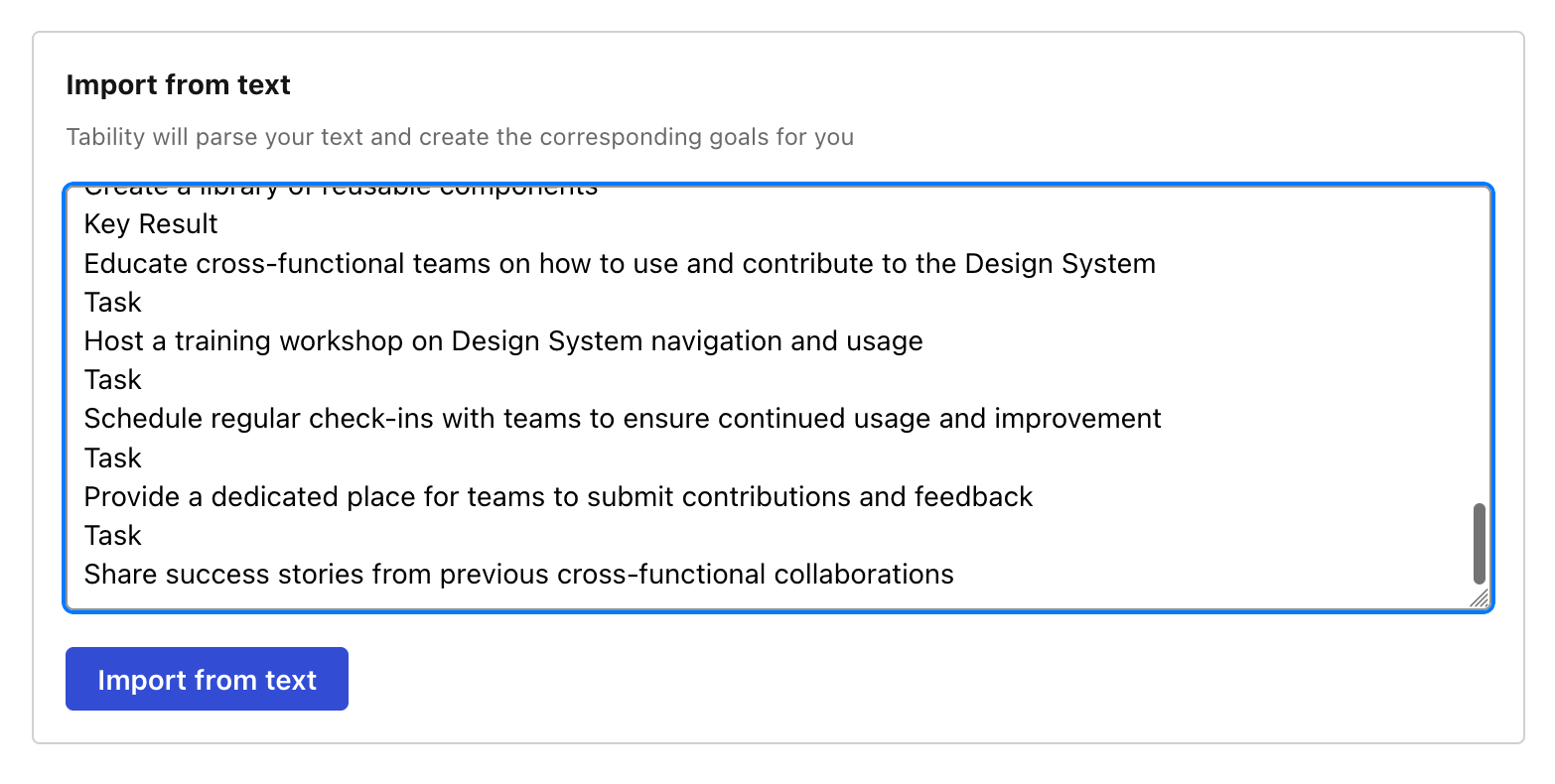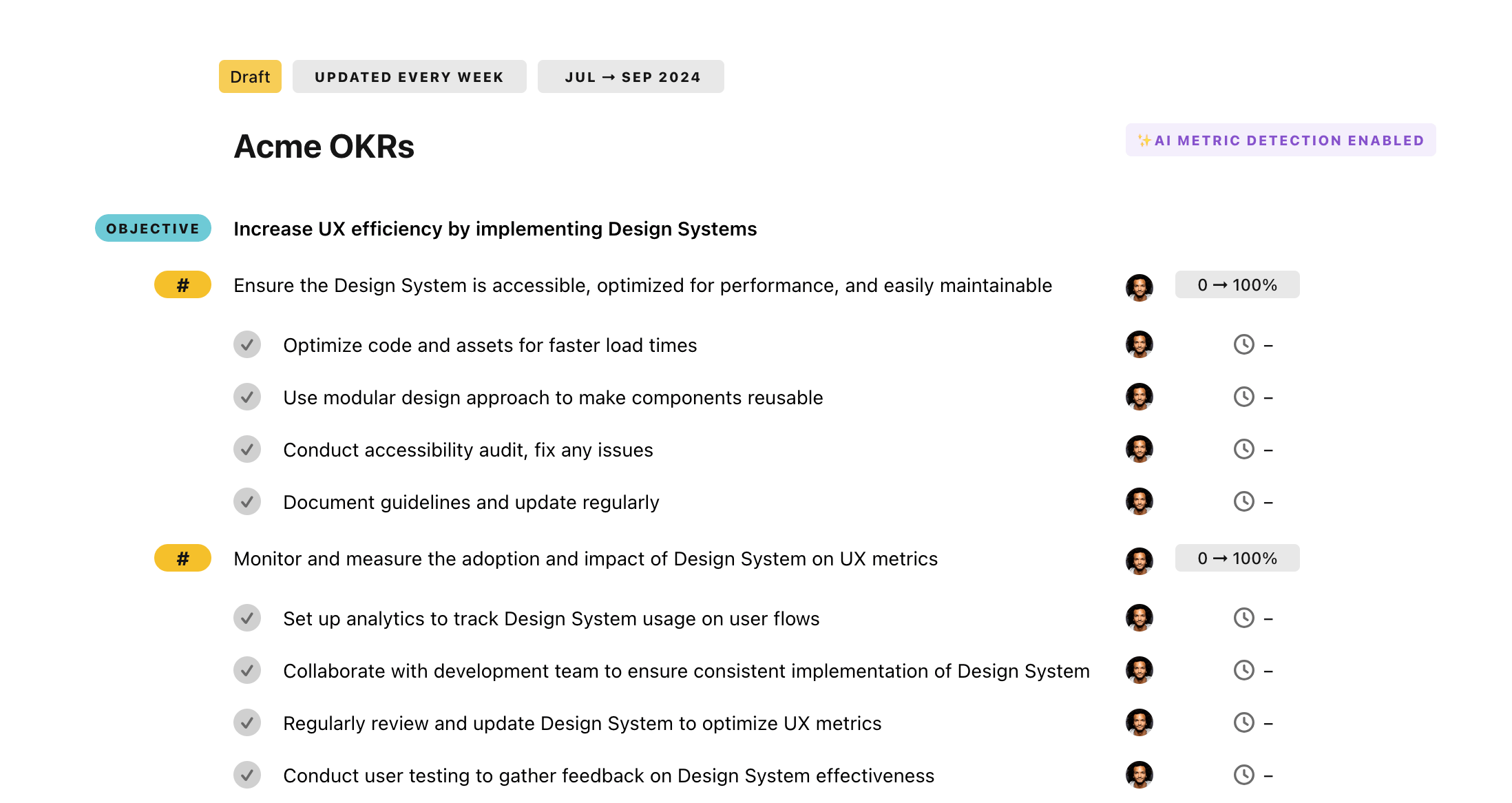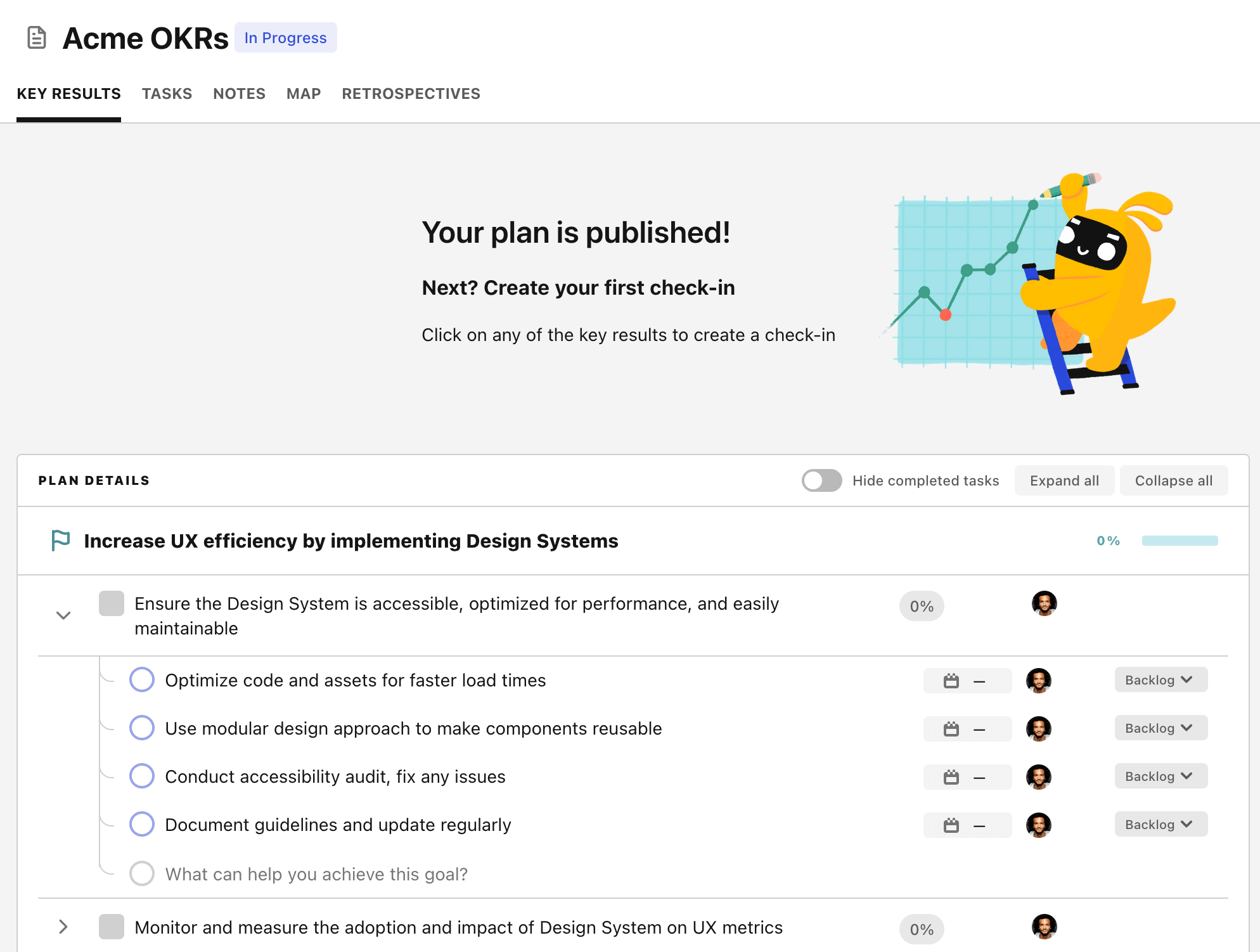OKR template to successfully establish a progress-tracking Notion template
Your OKR template
Post feature identification, the second objective pertains to the development, structure design, and extensive testing of the initial Notion template, to be completed in two weeks. The task is not only about creating the template coding but also performing rigorous debugging to ensure the template is error-free and efficient.
The third and last objective concerns adapting and enhancing the designed Notion template as per the received feedback since its initial development completed two weeks prior. The modifications will emanate from an analysis of the past two weeks' feedback, testing the updated template for efficiency and implementing the necessary changes for template optimization.
This continuous cycle of feedback, testing, and improvement will underpin the successful establishment of a progress-tracking Notion template, according to this OKR. With systematic planning and proper coordination, this OKR aims to improve the organization's efficiency in progress tracking to a great extent.
ObjectiveSuccessfully establish a progress-tracking Notion template
KRIdentify >5 features needed in the template within one week
Consult with team to gather feature suggestions
Review the current template for areas needing improvement
Compile list of prioritized feature needs within a week
KRBuild and test the initial Notion template in 2 weeks
Perform extensive testing and debugging of the template
Develop and program the initial Notion template
Design the layout and structure for the Notion template
KRAdapt and improve the template based on 2 weeks of feedback
Analyze feedback from last two weeks
Test updated template for efficiency
Implement changes to improve template
How to edit and track OKRs with Tability
You'll probably want to edit the examples in this post, and Tability is the perfect tool for it.
Tability is an AI-powered platform that helps teams set better goals, monitor execution, and get help to achieve their objectives faster.
With Tability you can:
- Use AI to draft a complete set of OKRs in seconds
- Connect your OKRs and team goals to your project
- Automate reporting with integrations and built-in dashboard
Instead of having to copy the content of the OKR examples in a doc or spreadsheet, you can use Tability’s magic importer to start using any of the examples in this page.
The import process can be done in seconds, allowing you to edit OKRs directly in a platform that knows how to manage and track goals.
Step 1. Sign up for a free Tability account
Go tohttps://tability.app/signup and create your account (it's free!)
Step 2. Create a plan
Follow the steps after your onboarding to create your first plan, you should get to a page that looks like the picture below.

Step 3. Use the magic importer
Click on Use magic import to open up the Magic Import modal.
Now, go back to the OKR examples, and click on Copy on the example that you’d like to use.

Paste the content in the text import section. Don’t worry about the formatting, Tability’s AI will be able to parse it!

Now, just click on Import from text and let the magic happen.

Once your example is in the plan editor, you will be able to:
- Edit the objectives, key results, and tasks
- Click on the target 0 → 100% to set better target
- Use the tips and the AI to refine your goals
Step 4. Publish your plan
Once you’re done editing, you can publish your plan to switch to the goal-tracking mode.

From there you will have access to all the features that will help you and your team save hours with OKR reporting.
- 10+ built-in dashboards to visualise progress on your goals
- Weekly reminders, data connectors, and smart notifications
- 9 views to map OKRs to strategic projects
- Strategy map to align teams at scale